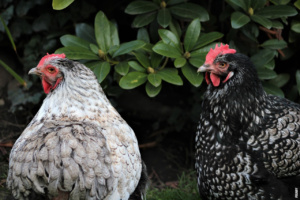Exploring the Mysterious World of Oysters
Oysters, fascinating creatures that inhabit our oceans, have captured the curiosity of many. These bivalve mollusks, known for their unique characteristics, are not only a delicacy but also play a crucial role in marine ecosystems. In this article, we will dive deep into the world of oysters, uncovering their secrets and understanding how they feed.
The Anatomy of an Oyster
Before we delve into their feeding habits, let’s get acquainted with the anatomy of an oyster. Oysters have a hard, irregularly shaped shell that provides protection from predators. Inside the shell, you will find the soft body of the oyster, consisting of various organs. The most important organ for feeding is the gills, which are responsible for filtering food particles from the water.
Feeding Mechanism
Now, let’s uncover the mesmerizing way in which oysters feed. Oysters are filter feeders, meaning they extract food from the water by filtering out particles. They constantly pump water over their gills, trapping tiny food particles such as plankton, algae, and other organic matter.
The Role of the Gills
The gills of an oyster are marvels of nature. Not only do they serve as the primary feeding apparatus, but they also play a vital role in respiration. As water flows over the gills, oxygen is extracted, and carbon dioxide is expelled. Simultaneously, food particles are caught on the gill filaments, where tiny hair-like structures called cilia move them towards the mouth.
The Power of Filtration
Oysters are exceptional filter feeders, capable of filtering large volumes of water. An adult oyster can filter up to 50 gallons of water per day, improving water quality by removing excess nutrients and sediment. This makes them not only important for their own survival but also vital for maintaining the balance of the entire ecosystem.
Post
Post
Feeding Strategies
Depending on their environment, oysters employ different feeding strategies. In nutrient-rich waters, they mainly rely on filter feeding. However, in nutrient-poor environments, oysters can switch to a different feeding mode called deposit feeding. In this strategy, they extract organic matter from the sediment.
The Circle of Life
As we unravel the mysteries of oyster feeding, it’s crucial to recognize their significance in the circle of life. Oysters are not only food sources for humans but also provide habitat for countless other marine species. Their feeding habits promote a healthy ecosystem by filtering water and enhancing water clarity, which in turn supports the growth of seagrasses and other aquatic plants.
Conclusion
The world of oysters is truly captivating. From their intricate feeding mechanisms to their ecological importance, these fascinating creatures never cease to amaze. As we continue to study and appreciate oysters, let us remember their crucial role in maintaining the health and balance of our oceans.



